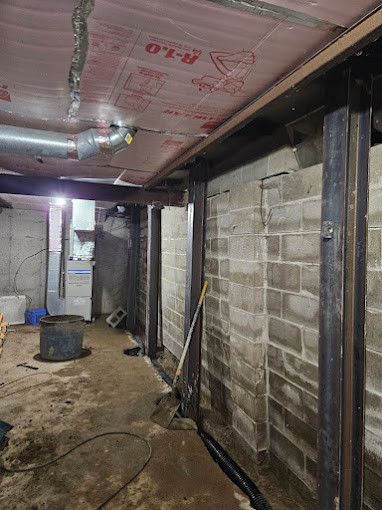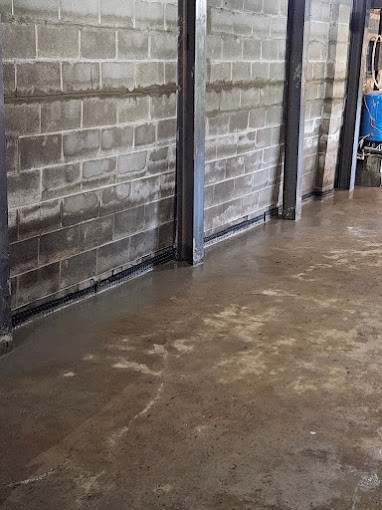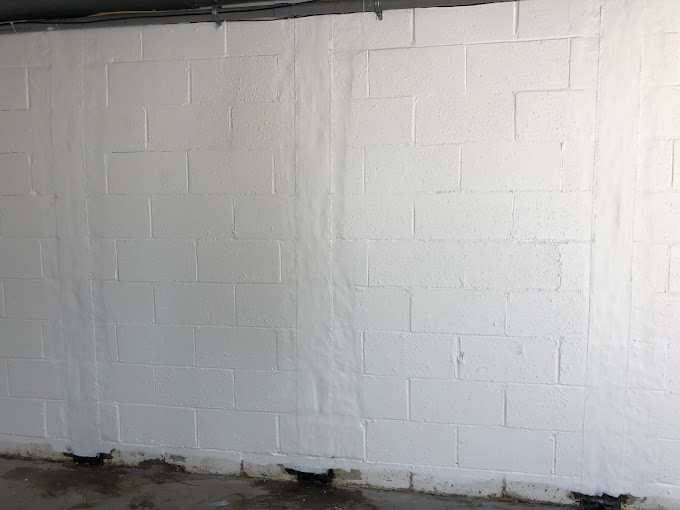How Long Do Foundation Repairs Last? Epoxy, Piers, Underpinning & More
Rochester, United States - October 3, 2025 / Highlander Waterproofing & Foundation Repair /
You’ve likely pondered the longevity of those common foundation repair solutions, haven’t you? It’s a concern, particularly when considering the broader implications for your property’s maintenance, value, and safety. From epoxy and polyurethane crack repairs to traditional Mass Concrete Underpinning and steel piers, the lifespan can range from a mere 5 years to an impressive 75 years. But what factors influence these figures? And how can you ensure you’re getting the best value for your investment? Let’s explore these questions together in our next discussion.
Key Takeaways
- Crack patching materials, such as epoxy and polyurethane, have a lifespan between 5-10 years, depending on environmental conditions and repair quality.
- Traditional Mass Concrete Underpinning can last over 50 years if correctly executed, while Screw Piling can endure up to 60 years.
- Resin Injection, a foundation repair technique, has a potential longevity of up to 20 years.
- Steel piers, which include helical, push, and micro types, can offer a robust foundation solution with a lifespan of up to 75 years.
- Concrete pilings’ durability is influenced by material quality and soil conditions, with optimal conditions allowing them to last for decades.
Understanding Foundation Repairs
When you’re dealing with foundation repairs, it’s crucial to grasp the basics. Understanding foundation types is your first step.
Whether you have a slab, pier and beam, or a full basement, different repair techniques apply based on the foundation type and the soil conditions surrounding it.
Soil conditions can affect your foundation’s structural integrity. High moisture levels cause soil to expand, leading to settlement issues. Conversely, when moisture levels drop, particularly during seasonal effects like drought, the soil contracts, causing your foundation to shift.
Repair costs vary depending on the severity of the damage and the repair techniques used. Modern repair technology can help reduce these costs while ensuring the job is done right.
It’s important to keep an eye on the state of your foundation, hence the need for regular inspection frequency. This can potentially save you from hefty repair costs down the line.
Lifespan of Crack Patching
You’ve learned about foundation repairs, now let’s look at crack patching.
It’s important to understand the process behind it and how durable these patches are. This will help you know how long you can expect your crack patching solution to last.
Crack Patching Process
Every homeowner will face the inevitable task of patching cracks in their foundation at some point. It’s a routine part of maintaining your home’s structural integrity.
But not all cracks are created equal, and understanding the crack types can guide you in selecting the appropriate patch materials.
Hairline cracks, often due to shrinkage or settling, can typically be patched with basic materials like hydraulic cement or polyurethane. These substances effectively fill the gap and bond with the surrounding concrete.
If you’re dealing with wider cracks, you’ll need a stronger solution. Epoxy injections are commonly used for their superior bonding capability and flexibility.
The patching process itself isn’t overly complicated. After cleaning the crack to remove any loose debris, you apply the chosen patch material.
Some materials require a bonding agent for better adhesion. Once applied, it’s important to smooth out the patch to ensure a flush finish with the rest of the foundation.
Durability of Patching
While it’s true that patching cracks in your foundation is a necessary part of homeownership, it’s equally important to consider the lifespan of these repairs. Different patching materials and repair techniques can significantly affect the durability of the patching.
Generally, patching materials like epoxy or polyurethane have a lifespan of about 5 to 10 years. However, this largely depends on factors like the severity of the crack, the quality of the repair, and the environmental conditions.
The durability of patching isn’t just about the material used, but also about the repair techniques implemented. A well-done patching job using the right materials and techniques can withstand the test of time.
Be sure to hire a professional who understands the intricacies of foundation repair. They’ll identify the best materials to use and the most effective techniques to apply.
On the other hand, a rushed or poorly executed repair mightn’t last as long and could lead to further damage. Therefore, when it comes to foundation repair, it’s not just about patching up the problem.
It’s about using the right strategies to ensure the repair lasts as long as possible.
Concrete Piling Longevity
The longevity of concrete piling is an essential aspect to consider when exploring foundation repair solutions. It’s important to know that the lifespan of these pilings can vary greatly based on several factors.
Firstly, the quality of the piling materials used can heavily influence how long your concrete pilings last. Better materials often equal better longevity.
Similarly, the installation techniques used can either extend or decrease the lifespan of your pilings. Professionally installed pilings with a high load capacity tend to last longer.
Soil conditions also play a key role in concrete piling longevity. If your property’s soil is moist and unstable, it could negatively affect the lifespan of your pilings.
Environmental factors such as extreme weather conditions can also impact their durability.
Maintenance frequency is another factor to consider. Regular checks and repairs can significantly increase the lifetime of your concrete pilings.
However, cost considerations come into play here. While regular maintenance can prolong the lifespan, it could also be a costly endeavor.
Lastly, the repair effectiveness of the concrete pilings used also affects their longevity. If the pilings aren’t effectively repairing the foundation issues, they may need to be replaced sooner.
Durability of Steel Piers
Now, let’s turn our attention to the durability of steel piers.
You’ll learn about their lifespan, the installation process, and how proper maintenance and care can extend their usability.
This knowledge will be invaluable for anyone considering this robust solution for foundation repair.
Steel Piers Lifespan
Unarguably, steel piers are a solid choice when it comes to foundation repair solutions, and you’re likely curious about their lifespan. Well, you’re in luck because these sturdy structures are known for their long-lasting performance. Various steel pier types, each with their unique steel pier advantages, contribute to their longevity.
With proper installation and maintenance, steel piers can last up to 75 years or even longer. That’s an impressive lifespan, isn’t it? However, several factors can affect this, such as the soil condition, the quality of the steel, and the type of pier.
To give you a clear idea, let’s look at the following table:
| Steel Pier Types | Advantages | Approximate Lifespan |
|---|---|---|
| Helical Steel Piers | Ease of installation, less disruption to property | 75+ years |
| Push Steel Piers | High load capacity, adjustable | 75+ years |
| Micro Steel Piers | Ideal for light structures, cost-effective | 50+ years |
Installation Process
A significant factor to consider in the longevity of steel piers is the installation process.
It’s not just about choosing the right foundation materials; you’ve got to ensure they’re installed correctly. The right installation techniques can make a world of difference.
Now, you might be wondering, “What are these techniques?” First off, the site is prepared by excavating the area where the piers will be installed. This is crucial; a well-prepared site ensures the piers have a solid base to rest on.
Next, the steel piers are driven into the ground. The force used during this process must be just right. Too much, and you’ll risk damaging the piers; too little, and they won’t be stable enough.
Maintenance and Care
While the installation process plays a significant role in the lifespan of steel piers, it’s equally important to pay attention to their maintenance and care. Proper care and preventive measures can extend the durability of steel piers, ensuring your foundation remains stable for years to come.
Regular inspections are crucial. You should inspect your foundation for any signs of damage or wear. If you notice anything unusual, don’t hesitate to consult a professional.
Seasonal adjustments are another key aspect of maintenance. The changing seasons can significantly affect the soil around your foundation. Therefore, you need to make the necessary adjustments to prevent any potential damage.
Here are some effective strategies you can employ to enhance the lifespan of your steel piers:
- Implement moisture control methods to keep the soil around your foundation dry.
- Soil stabilization techniques can mitigate the risk of soil shifting.
- Adopt landscaping strategies that don’t compromise the integrity of your foundation.
- Explore drainage solutions to prevent water accumulation near your foundation.
- Regular foundation monitoring helps detect problems early, enabling quick action.
Helical Piers: What to Expect
Delving into the world of helical piers, you might wonder what to expect from this foundation repair solution. Well, let’s break it down.
One of the key helical pier benefits is its versatility. They’re suitable for both light and heavy structures, and they can be installed in areas with limited access or poor soil conditions. This makes helical piers a go-to solution for a variety of structural issues.
Helical pier installation is quite straightforward. It’s like screwing a giant screw into the ground. The piers are twisted into the earth until they reach stable soil or bedrock. Then your home’s foundation is attached to these piers for added support. This installation process is less invasive and usually quicker than other foundation repair methods.
Another benefit is that helical piers provide immediate load-bearing capacity. That means you don’t have to wait for concrete to cure or soil to settle, which can speed up your project timeline.
Lifespan of Underpinning Methods
When it comes to underpinning methods, their lifespan is an essential consideration for any homeowner. You want to know that you’re investing in a solution that will last, ensuring your home’s structural integrity is secure for years to come.
Underpinning techniques differ in their duration due to the varying underpinning materials utilized. It’s not a one-size-fits-all situation, but understanding these techniques and materials can guide you to make an informed decision.
Here are a few key points:
- Traditional Mass Concrete Underpinning: This method is known for its longevity, often lasting over 50 years if done correctly.
- Resin Injection: This newer technique may last up to 20 years, but it’s still under observation for long-term efficacy.
- Pile and Beam Underpinning: This method is robust and can last for several decades.
- Mini-Piled Underpinning: As a fairly new technique, its lifespan is still being evaluated, but early indications show promise.
- Screw Piling: This method can last up to 60 years, depending on the soil conditions.
Factors Influencing Repair Lifespan
Several factors can significantly influence the lifespan of your foundation repair solutions. The soil composition around your building plays a crucial role. For instance, expansive clay soils can shift considerably with changes in moisture levels, putting stress on your foundation and potentially shortening the lifespan of repairs.
Environmental conditions such as weather patterns and seismic activity also impact repair longevity. If you’re in an area prone to heavy rains or earthquakes, your repairs may not last as long.
Similarly, your building’s age can affect repair lifespan; older structures may require more frequent repairs.
Drainage systems are another key factor. If they’re not functioning properly, increased moisture levels can accelerate foundation damage, thereby reducing repair lifespan.
Load distribution is equally important; uneven loads can stress the foundation, leading to more frequent repairs.
Lastly, the construction materials used in your repair can impact its lifespan. High-quality materials tend to last longer, but they may also be more expensive.
It’s a balancing act between cost and longevity that you’ll need to consider when planning your foundation repair.
Frequently Asked Questions
Does Homeowners Insurance Typically Cover Foundation Repair Costs?
Typically, your homeowners insurance doesn’t cover foundation repair costs.
Most insurance policies view these as maintenance issues, not accidental damage. They often have repair exclusions for things like settlement, soil movement, and wear and tear.
You’re expected to keep up with home maintenance to prevent these problems. Always check your policy details to see what’s covered and what’s not.
It’s important to understand your coverage limits and exclusions.
What Are the Early Warning Signs of Foundation Problems?
You’ll notice early warning signs of foundation problems through changes like uneven floors, sticking doors, and windows, and crack patterns on walls or floors.
Pay attention to your home’s moisture levels too. Damp basements and crawlspaces may indicate an issue.
If you see these signs, it’s best not to ignore them. They’re your home’s cry for help, a sign that your foundation needs a checkup.
Don’t delay, get it inspected immediately.
How Does Weather Affect the Lifespan of Foundation Repairs?
Weather patterns significantly impact the lifespan of your foundation repairs.
Seasonal fluctuations, particularly in areas with extreme temperatures or heavy rainfall, can cause the ground to expand and contract. This movement puts stress on your repairs, potentially shortening their lifespan.
It’s important to monitor the effects of weather on your foundation and adjust repair strategies as necessary to ensure they’re effective for as long as possible.
Are There Preventive Measures to Prolong the Lifespan of Foundation Repairs?
Yes, there are preventive measures you can take to prolong the lifespan of foundation repairs.
It’s crucial to conduct regular preventive maintenance, such as managing soil moisture levels and performing periodic inspections.
Also, using advanced repair techniques can extend repair longevity.
You’ll reduce the risk of further damage, saving time and money in the long run.
How Can Soil Conditions Impact the Effectiveness and Longevity of Foundation Repairs?
Soil conditions greatly affect the longevity of your foundation repairs.
For instance, soil composition can either stabilize or destabilize your foundation. Clay-rich soils expand when wet, which can cause cracks.
Also, high moisture levels contribute to soil movement, potentially damaging your repairs.
So, it’s vital to maintain optimal soil conditions to increase the effectiveness and lifespan of your foundation repairs.
In essence, good soil conditions equal long-lasting repairs.
Remember, the lifespan of foundation repair solutions can greatly vary. Crack repair might last up to 10 years, while steel piers could endure for 75 years. Concrete piling longevity depends on soil conditions, and underpinning can last over 50 years. Always invest in high-quality materials and proper installation to maximize lifespan, reducing maintenance costs. Stay informed about the factors influencing repair lifespan to ensure your foundation remains solid and secure for years to come.

Contact Information:
Highlander Waterproofing & Foundation Repair
1504 Scottsville Road #210
Rochester, NY 14623
United States
Giulio Bevilacqua
(877) 415-0564
https://highlanderwaterproofing.com/




